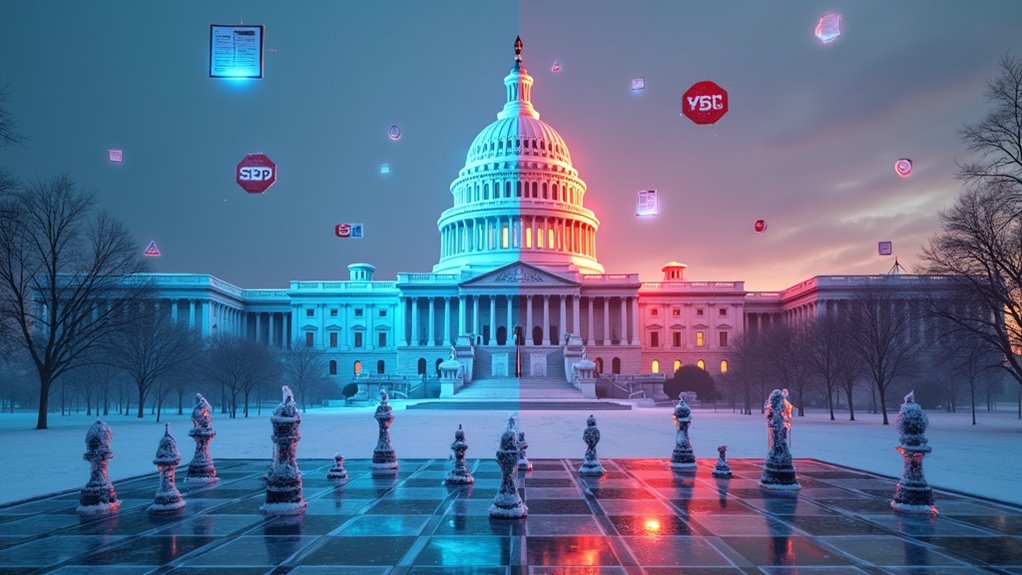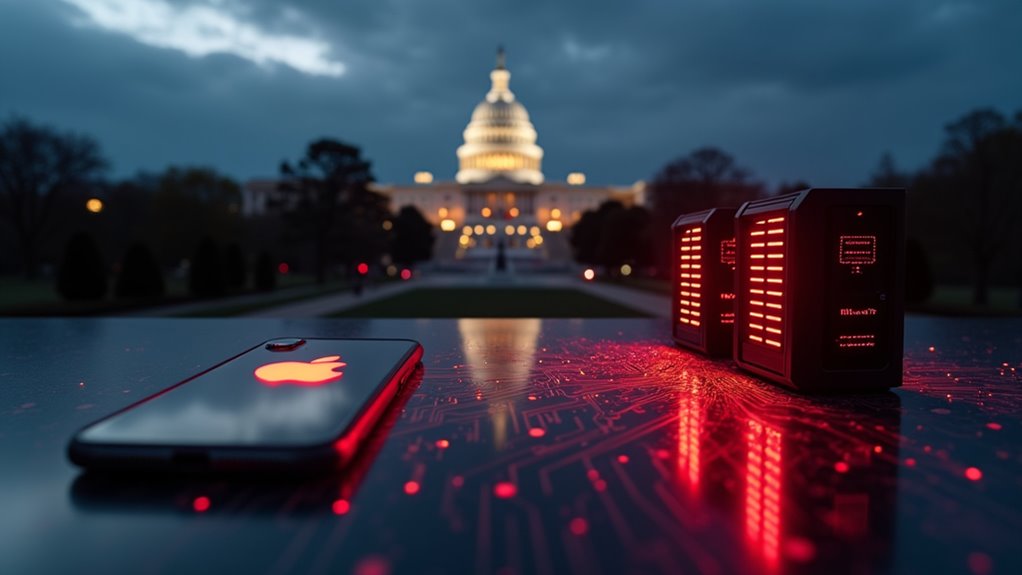AI is blowing past U.S. laws like it’s in a Fast & Furious movie, while Congress is stuck at a red light. There’s no federal AI law—just a Frankenstein mash-up of state rules. You’ve got Colorado policing algorithmic bias, California freaking out over deepfakes, and the Feds just issuing “friendly suggestions.” Sound chaotic? It is. Under-regulate and you risk mayhem; overdo it, and innovation dies. Want to see how this patchwork mess is shaping your world? Stick around.
Even as artificial intelligence rockets ahead—faster than a caffeinated coder on a deadline—America’s legal system is still fumbling for the instruction manual.
While AI is busy rewriting the rules of work, play, and, well, reality, the U.S. is stuck with a patchwork of policies and non-binding agency advice. There’s no grand federal AI law—just a lot of “guidance” and “blueprints,” plus a growing pile of state regulations that look more like a quilt than a roadmap.
Here’s the current state of play:
- *Hundreds of AI bills* are popping up in state legislatures. Colorado, California, and Illinois are among the early birds, passing laws on algorithmic discrimination and deepfake election meddling.
- Meanwhile, the feds are dabbling: the SEC is eyeing AI, cybersecurity, and crypto, but most federal rules remain voluntary—think “please don’t break the internet,” rather than “or else.”
- The White House, now under a new executive order, has revoked Biden-era AI policies in hopes of turbocharging U.S. tech dominance. Whether this creates more clarity or just more chaos, well, time will tell. The new order aims to remove barriers to American AI innovation and sustain the nation’s global leadership in AI.
Lawmakers aren’t flying totally blind. They’ve convened bipartisan task forces, held Senate hearings, and actually talked to AI developers—imagine that! Despite this, the U.S. still lacks a comprehensive AI Act, leaving the country with a fragmented approach to regulating artificial intelligence.]
Still, many of the most pressing issues, like bias in automated hiring or AI-fueled disinformation, are being tackled at the state level, not in D.C.
America wants to stay ahead of China, especially since the latter churns out more STEM graduates than Starbucks does lattes.
But here’s the riddle: how do you keep innovation humming while making sure the robots don’t break things (or democracy)? Overregulation could scare off the next AI unicorn. Underregulation invites bias, hacks, and chaos.
So, what’s next?
- More states will pass their own laws—some useful, some weirdly specific.
- Federal agencies will keep offering “guidance,” but real teeth are missing.
- And, somewhere, lawmakers will keep looking for that elusive AI instruction manual—before the machines start writing it themselves.









